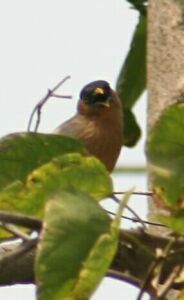
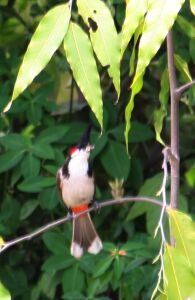 So I decided to eat my lunch on the balcony: fortunately, I have a fan
installed on my balcony!
So I decided to eat my lunch on the balcony: fortunately, I have a fan
installed on my balcony!
It was getting to be summer and the sun was beating down on Kanpur. As I was entering my compound at hottest lunchtime, I saw that the garden was being watered and some water had accumulated in the depression at the base of an ashok tree. A few babblers were wandering around the edges, sipping the water.

 So I decided to eat my lunch on the balcony: fortunately, I have a fan
installed on my balcony!
So I decided to eat my lunch on the balcony: fortunately, I have a fan
installed on my balcony!
As I was sitting there, a bulbul came to the ashok tree and sang for a while. It was a red-whiskered bulbul, the ones that have a red patch on the side of the cheek like a Rajasthani man's whisker. (Click on the image to see another picture where you can see the "whiskers" more clearly.) The bulbul's song, though, I can assure you, is quite different from that of a Rajasthani military man!
A brahminy myna also showed up on the kachnar tree on the other side of the
fence. Brahminy mynas are very common birds - but they behave so much
like normal mynas that we may miss their special orange colour and the
brilliant tinge of blue on their bill. (Click on that image to see a clearer
picture of a brahminy myna).
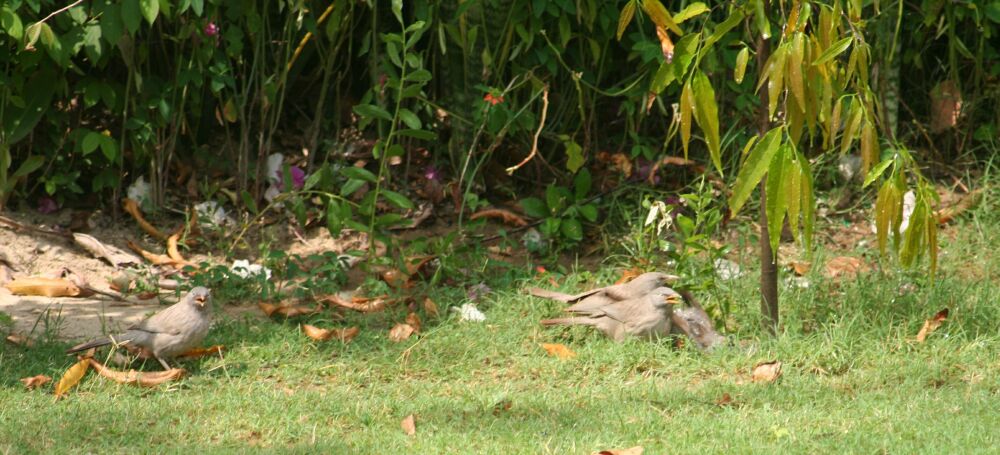 Just then a bunch of common babblers come along, jostling and scrambling till
the edge of the water. I can't vouch for this, but I am pretty sure that a couple of
babblers pushed a third chappie into the water. Babblers are such
bullies... Anyhow in this picture you can see the birdy in the water
splashing water on the rest with her wings.
Just then a bunch of common babblers come along, jostling and scrambling till
the edge of the water. I can't vouch for this, but I am pretty sure that a couple of
babblers pushed a third chappie into the water. Babblers are such
bullies... Anyhow in this picture you can see the birdy in the water
splashing water on the rest with her wings.
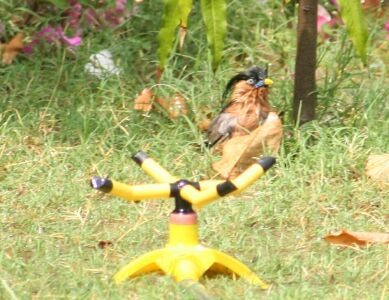 But just as quickly, they were gone. And then I was trying to finish my lunch (I had
a meeting at 3 PM), and I didn't quite notice how and when this Brahminy
myna - probably the same one who was looking down earlier - had gotten down
and entered the water. Suddenly I saw him splashing around, jumping from one
side of the pool to the other!
But just as quickly, they were gone. And then I was trying to finish my lunch (I had
a meeting at 3 PM), and I didn't quite notice how and when this Brahminy
myna - probably the same one who was looking down earlier - had gotten down
and entered the water. Suddenly I saw him splashing around, jumping from one
side of the pool to the other!
I got onto the lawn to get a good view of his bath, and he was having such a good time he didn't bother with me. (By the way, in birding lingo, birds who don't run away from humans are called "confiding". Mostly, mynas are confiding; they're not scared of you!)
The Brahminy Myna was busily splashing away. It would jump around on one side, and then the other. To me, it seemed he was more than cooling off - he was just having fun!
But the Brahminy was splashing away as if he is quite unaware of the babbler, and the babbler steps a notch closer to make his presence felt.
I doubt very much that the brahminy can be unaware of such a close presence - birds are at all times extremely sensitive to the slightest changes in their environment. My hunch is that the Brahminy is saying: "Boo to you!" or some such rude remark; among birds, it's their actions that do all the talking. So, by splashing water despite her close presence, the Brahminy is just saying: "Go jump in the lake!" (It's besides the point that the Babbler may just want to do that! )
You see, there is a hierarchy among birds, and I suspect that babblers are not very high up on this ladder, particularly because they are such poor fliers - they can fly better than your average chicken, but that's not saying much. On the other hand, the mynas are excellent in flight, very quick and agile - so the babblers know they can't touch a myna. Like all bullies, they will go after the weaker, like squirrels that can't fly, but they will be careful of the myna.
So the myna is just being cheeky and splashing water.
If you click on the middle image - not a very sharp
image, I'm afraid, but
I think you still should be able to see the water droplets scattering everywhere,
some on the babbler as well.
At this point, some other babblers were also coming, and although the myna
didn't look that side, he knew about them, and he decided that
discretion is the better part of valour.
So here you can see him flying off:

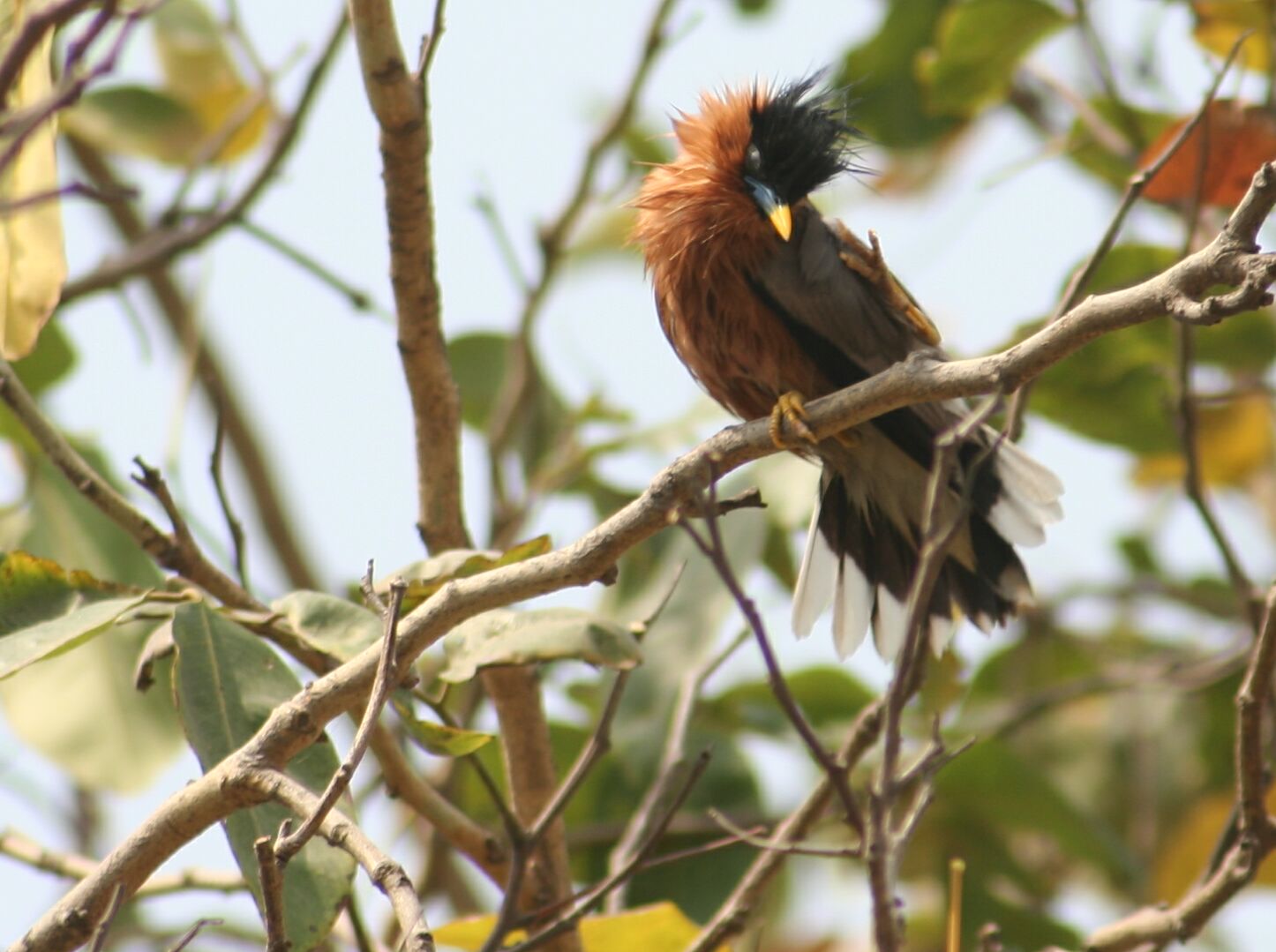
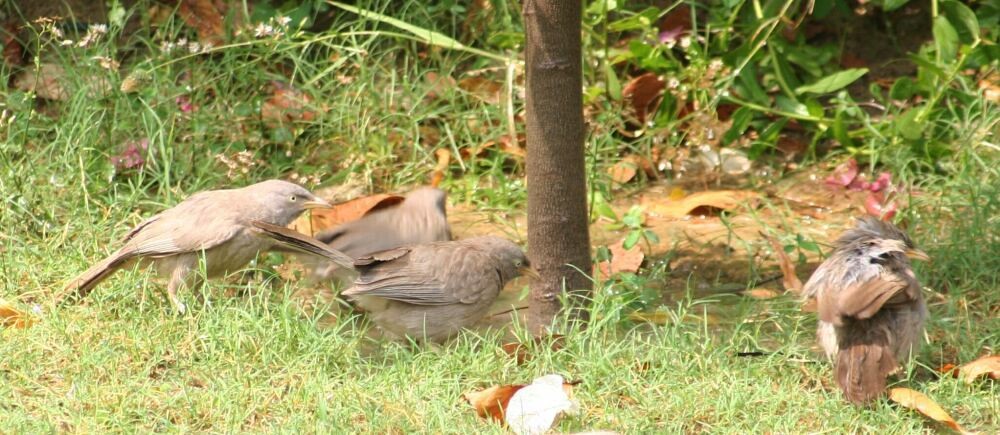 Meanwhile, the Babbler gang came back to the pool. But they didn't jump
around with quite the abandon of the myna!
Meanwhile, the Babbler gang came back to the pool. But they didn't jump
around with quite the abandon of the myna!
Now look at this picture, and tell me if he isn't picking his nose at the babblers!
And now, don't you think the Brahminy is looking to see what came
out of the nose?
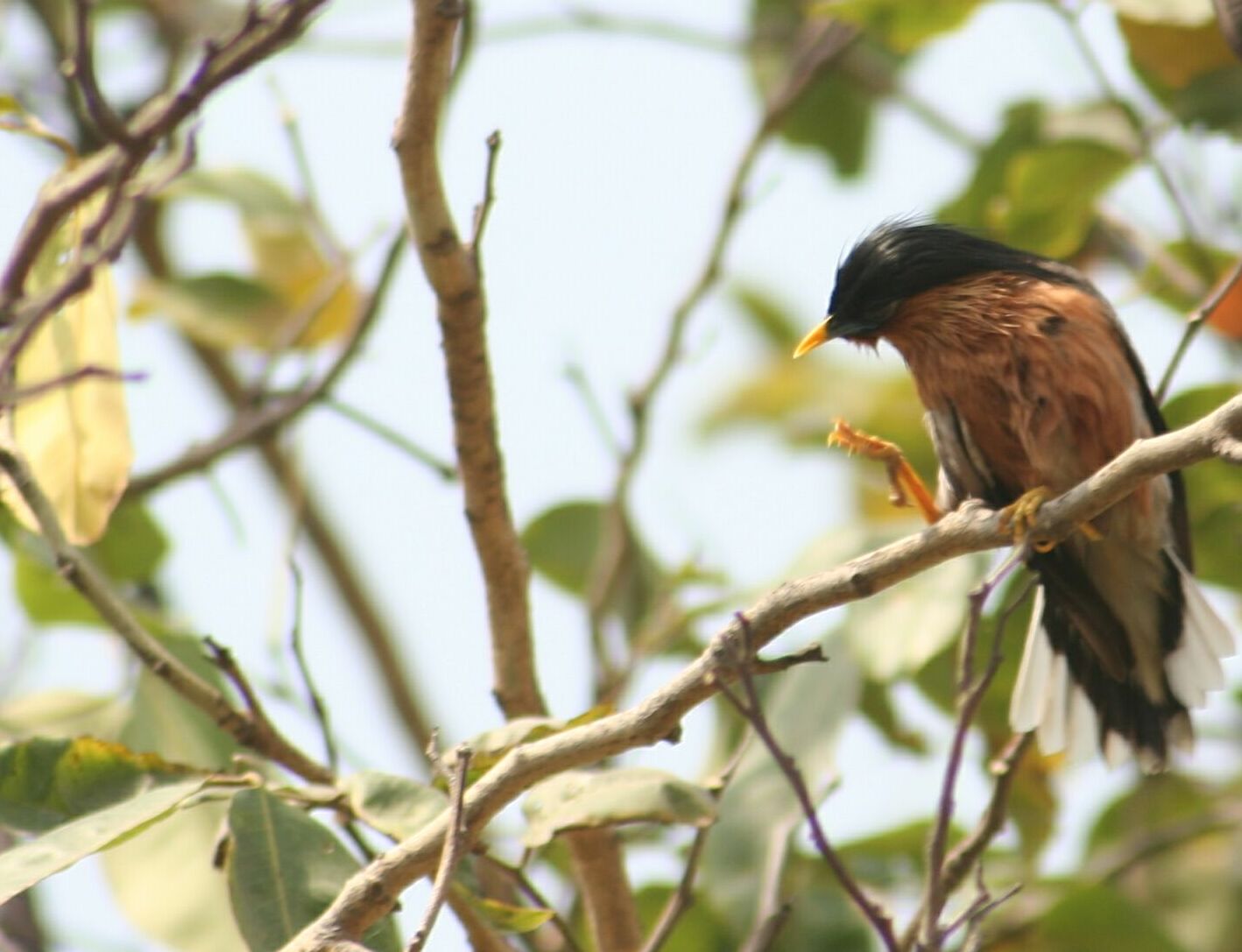
You may think that I am perhaps carrying things too far, and that I have fallen in love with this creature... but then what can I do, he's such a lovable truant, don't you think?
Normally trees have a lot of space for many birds, but one of the babblers -
I think it was the same one, started moving along the very branch where our
brahminy was sitting. If you look carefully in the branches at the left of
this picture you should see him coming.

The Brahminy did not look once towards the babbler, but he knew what was
coming. Not wanting to have another babbler encounter, he just flew
off, away from my garden for the day...
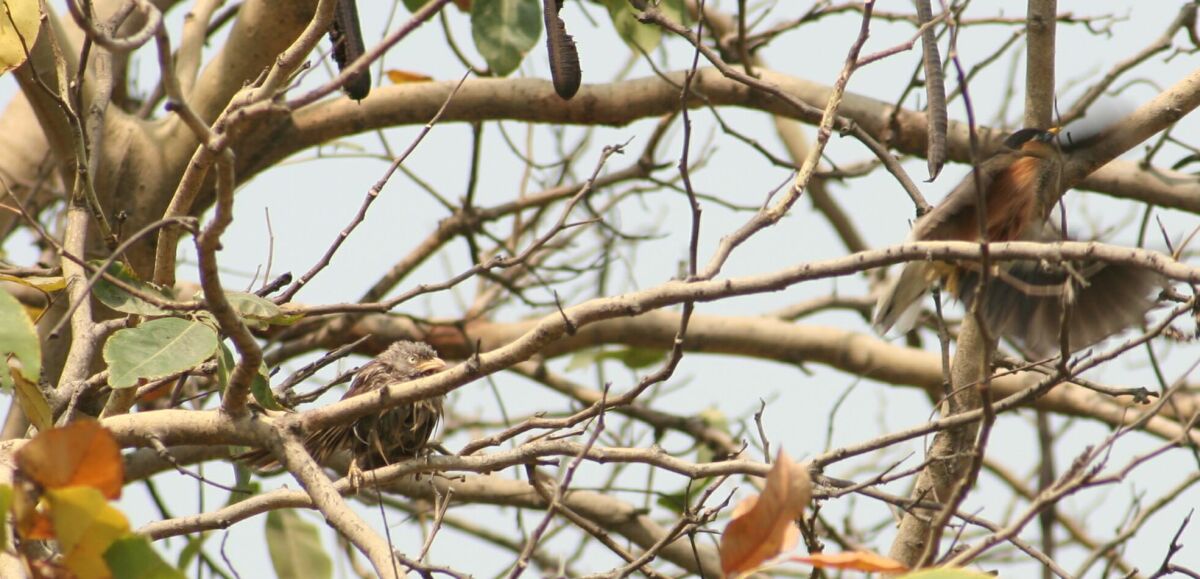
ShaMkarA nAma parivrAjikA shaMkarA nAmaThe origin of the name "brahminy," however, may have more to do with the "choti" - i.e. the way the black crown has a longer strand going back, brahminic style.
shakunikA tachchhIlA cha tasyaM ubhayaM prApnoti
'Shankara' , an ancient name of this ochre colored bird, the wanderer 'Parivrajika' amongst birds, a pious 'Sanyasini'.
Don't you think this wandering sannyasini is someone you should look after, whenever she shows up in your garden?